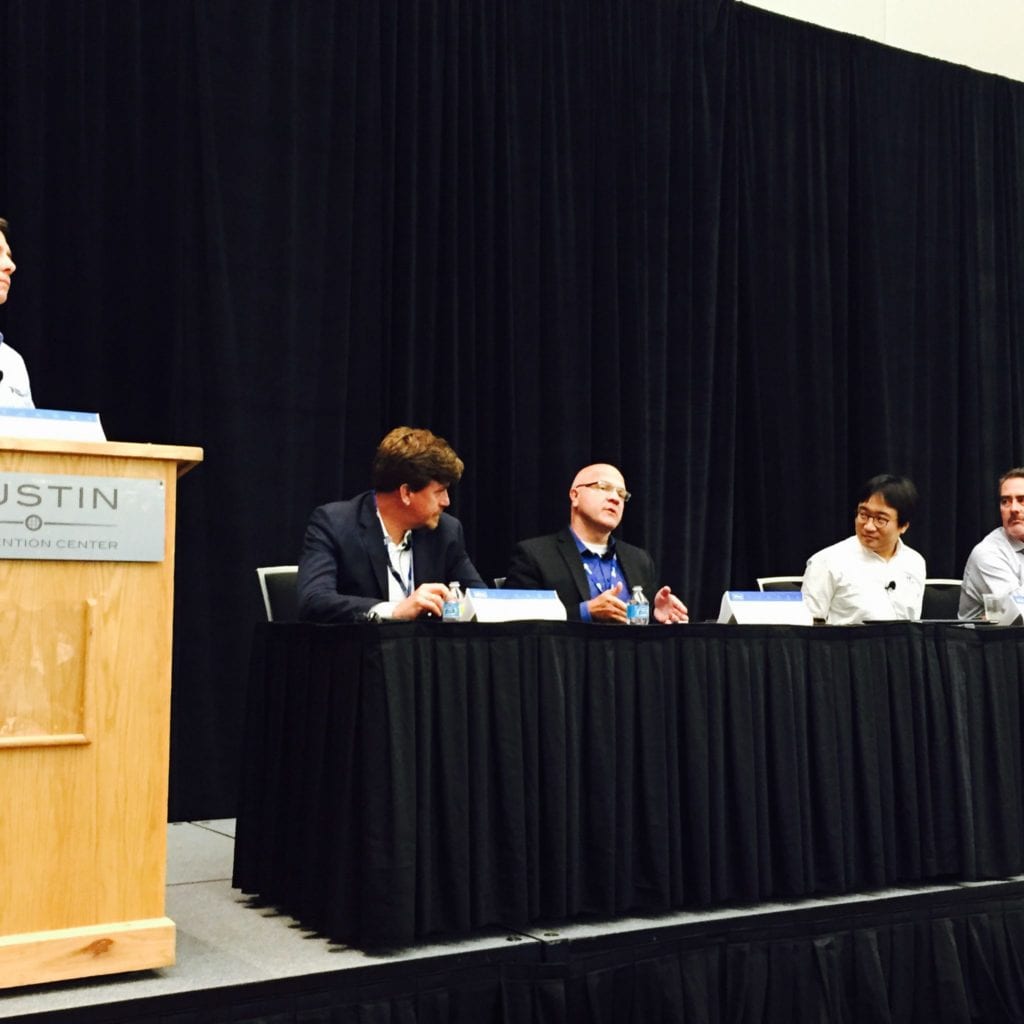IoT is a hot topic at National Instruments’ ongoing NI Week
AUSTIN, Texas – National Instruments kicked off its annual NI Week on Aug. 3, and among the first round of presentations was a forward-looking panel discussion about the future of the “Internet of Things.”
Moderated by Eric Starkloff, NI’s EVP of global sales and marketing, panelists discussed the promise of the connected world as well as the technological challenges associated with realizing that goal.
Mark Cudak, principal research specialist for Nokia Networks, said that future networks need to operate with lower latency and higher reliability than what’s available today.
“Our networks today will not be able to handle that volume, but we’re working toward that,” he said. “When we look at support in cellular networks for machine-type devices, we’re really looking at two different solutions.”
Cudak name-checked 5G, which is the as-yet unstandardized next big leap in mobile, along with LTE-M, which is essentially LTE optimized for machine-to-machine networks. Attendant to that, Cudak said, are concerns like the aforementioned data volume, but also cost reduction and battery life.
“Our goal is to have 10 years of battery life on two AA batteries.”
Paul Didier, solutions architect manager for Cisco System’s Internet of Things Group, highlighted the huge value associated with industrial IoT applications.
“With basic connectivity to the machines … they’re starting to do zero downtime, asset utilization, asset optimization, [things] that are absolutely incredible in terms of the value they’re starting to bring to their customers, but also driving them to utterly new business models.”
Subscribe now to get the daily newsletter from RCR Wireless News
He gave the example of deploying a robot into a manufacturing plant; the robot creates value to the enterprise via efficiency and reducing operating expenses, while the provider can now provide service contracts to maintain the robot.
“They can move into service contracts or other things to provide ongoing, continuous value to their customers and save themselves lots and lots of time sending engineers out into the field, learning a lot more about their product in the field, being able to upgrade it, update it and drastically improve their R&D,” he said.
Many questions from the audience were geared around potential security risks associated with IoT networks.
Greg Gorman, director of Internet of Things engineering solutions for IBM, discussed recognition at the chip level, “almost a fingerprint.”
“I would almost want multiple different types of security software in the network,” he said. “We at IBM have been looking at a lot of things. We want to collect information from every device out there, do analytics on it and process that data for you. I think [security is] a huge challenge. I don’t look at it as a problem. It’s just an engineering solution that’s waiting to be done.”
Didier said engineers are “behind when we look at security. When we look at lots of these environments, the protocols they work with, the types of devices, they’re all prone to security attacks. It’s just getting started and just getting put out there.”
Stay tuned to RCR Wireless News for more coverage of NI Week.
